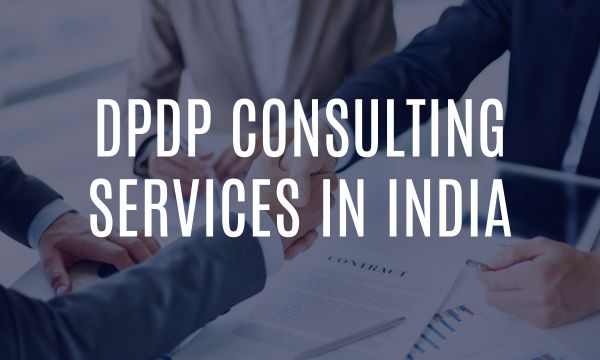
In today’s rapidly evolving digital landscape, cyber threats loom large over organizations of all sizes. Vulnerability Assessment and Penetration Testing (VAPT) acts as your first line of defence, uncovering weak links in your IT ecosystem. However, merely conducting VAPT is not enough, it is only half the battle. The real value lies in post-VAPT remediation—a structured and strategic approach to addressing vulnerabilities. According to Cybersecurity Ventures, cybercrime is projected to cost the world $10.5 trillion annually by 2025, emphasizing the need for robust post-VAPT actions. Here, we provide a detailed guide to fortifying your security posture post-VAPT.
Decipher the VAPT Report
1. Comprehend the Findings: Start by diving into the VAPT report to ensure your IT and security teams fully understand the identified vulnerabilities and their potential impact on your organization. For example, if the report highlights outdated SSL certificates, recognize how these could expose the organization to Man-in-the-Middle (MitM) attacks.
2. Prioritize Issues: Use a risk-based approach to rank vulnerabilities from critical to low, enabling you to allocate resources effectively. For instance, critical vulnerabilities like unpatched RCE (Remote Code Execution) should take precedence over lower-risk issues such as weak password policies.
3. Identify Trends: Analyze the report for recurring issues, which can point to systemic flaws that require immediate attention. For example, if several applications are found with improper input validation, it might indicate a need for organization-wide developer training in secure coding practices.
Strategically Prioritize Remediation
1. Tackle Critical Threats First: Gartner’s research indicates that over 60% of breaches exploit known vulnerabilities. For instance, if a VAPT report highlights an unpatched SQL injection vulnerability in a customer-facing application, addressing it immediately can prevent potential data breaches.
2. Focus on Compliance Requirements: Address vulnerabilities that impact regulatory frameworks such as GDPR, HIPAA, or PCI DSS. For example, a healthcare provider found an insecure API that exposed patient data during VAPT. By securing the API, they not only protected sensitive information but also ensured compliance with HIPAA regulations.
3. Optimize Resource Use: Deploy skilled personnel and allocate the necessary tools to ensure efficient and effective remediation. For example, an organization facing multiple medium-risk vulnerabilities might prioritize allocating experienced developers to address these while less critical issues are managed by junior staff under supervision.
Design a Comprehensive Remediation Plan
1. Set Actionable Timelines: Develop a roadmap with deadlines tailored to the severity of each vulnerability. Having a roadmap will streamline the tasks handling and keeping updates.
2. Collaborate Effectively: Include IT teams, developers, and vendors in the planning phase to ensure a seamless execution. When it comes to resolving errors it is important to have all the teams working on the same plane to avoid delays and miscommunication.
3. Ensure Accountability: Clearly define roles and responsibilities for all stakeholders to prevent oversight.
Execute Fixes and Patches
1. Patch Systems Diligently: Apply software and firmware updates without delay to mitigate vulnerabilities. For example, a retail company patched a known vulnerability in its point-of-sale system after it was flagged during VAPT, preventing potential data breaches of customer payment information.
2. Reconfigure Securely: Address misconfigurations such as open ports or weak passwords that can act as entry points for attackers. For instance, a financial organization secured an open administrative port on its server, which could have been exploited for unauthorized access.
3. Modernize Outdated Tech: Replace legacy systems that are prone to exploitation, ensuring a more secure infrastructure. As an example, a healthcare provider upgraded its outdated Windows XP systems to a modern, supported OS, significantly reducing the attack surface.
Validate with Post-Remediation Testing
1. Confirm Fixes: Conduct follow-up tests to verify that identified vulnerabilities have been effectively mitigated. For example, after applying a patch to fix a SQL injection vulnerability in a financial application, perform penetration testing to ensure the exploit is no longer viable.
2. Retest High-Risk Areas: Ensure that critical vulnerabilities are completely resolved by retesting them thoroughly. For instance, an e-commerce platform retested a critical cross-site scripting (XSS) issue in its payment gateway, ensuring it could no longer be exploited to steal customer data.
3. Maintain Documentation: Record all remediation actions and outcomes to support audits and future reviews. For example, document the remediation process for an insecure API endpoint, including before-and-after test results, to demonstrate compliance during regulatory audits.
Strengthen Policies and Procedures
1. Update Security Policies: Incorporate insights gained from the VAPT findings to enhance your security framework. Your security policy may be foolproof but it always has room for updates in the current challenging scenario, so it is advised not to ignore revisiting and confirming.
2. Create Preventive Protocols: Develop guidelines to prevent the recurrence of similar vulnerabilities. If we can prevent these things by learning from past or industry trends why not incorporate them?
3. Educate the Workforce: Regularly train employees on the latest security measures and best practices to minimize human error. Make sure to keep your employees updated with at least once a year training or session.
Integrate Vulnerability Management
1. Automate Processes: Utilize tools for continuous scanning and real-time alerts to stay ahead of emerging threats. Automation will help to keep a check regularly to ensure the security of important systems and data.
2. Schedule Regular Reviews: Conduct periodic assessments to identify and address new vulnerabilities. Being consistent in regular assessment will strengthen the preventive measures. The vulnerability existing in the system, which may yet not be exploited still has the power to sink the entire ship.
3. Standardize Patch Management: Ensure that patches are applied systematically and on schedule to maintain system integrity. With time the current perfect system may not stay the same hence ignoring patch management may act as a self-destruction for the entire cybersecurity effort.
Implement Proactive Monitoring
1. Leverage SIEM Tools: Use Security Information and Event Management (SIEM) tools to monitor systems for anomalous activities and potential threats. Whether outsourced or in-house it is an effective way to keep a watch on the security of your organisation.
2. Analyze Audit Logs: Regularly review logs to detect unauthorized actions or unusual patterns. Having systems in place is just not sufficient, analyse the logs and records to trace the smallest loop in the beginning or minor stage.
3. Configure Alerts: Set up alerts for red flags such as unusual traffic patterns or login failures. This is very effective and must be deployed as customised to the business requirements.
Prepare a Robust Incident Response Plan
1. Learn from VAPT: Use insights from the VAPT report to refine your incident response strategy. For example, if the report reveals repeated phishing simulation failures among staff, update your response plan to include specialized training for email handling and awareness.
2. Outline Escalation Protocols: Define clear steps for addressing incidents of varying severity levels. For instance, if a data breach is detected, an escalation protocol might specify immediate isolation of affected systems, notification of key stakeholders, and engagement of a digital forensics team.
3. Simulate Scenarios: Conduct mock drills to test the plan’s effectiveness and organizational readiness. For example, simulate a ransomware attack by encrypting non-critical files in a controlled environment and observe how the team follows the protocol, identifying gaps in response times or decision-making processes.
Foster a Culture of Continuous Improvement
1. Close the Feedback Loop: Leverage lessons from remediation efforts to enhance your overall security posture.
2. Stay Updated: Keep abreast of evolving cybersecurity standards and best practices. Cybersecurity is not a one-time thing hence always keep on learning and updating.
3. Build Security Awareness: Promote a proactive approach to cybersecurity across all levels of your organization. More than 85% of cyber attacks involve human negligence, hence all levels of employees should understand their roles and responsibilities towards the security of the organisation.
Post-VAPT remediation is not just about addressing current vulnerabilities; it’s about establishing a security framework that evolves alongside the ever-changing threat landscape. Cybersecurity is a continuous journey, and organizations that prioritize structured remediation will emerge stronger and more resilient. By implementing the steps outlined in this guide, you can protect sensitive data, maintain compliance, and effectively mitigate future risks.
Take control of your cybersecurity today; a proactive strategy can mean the difference between resilience and compromise.



